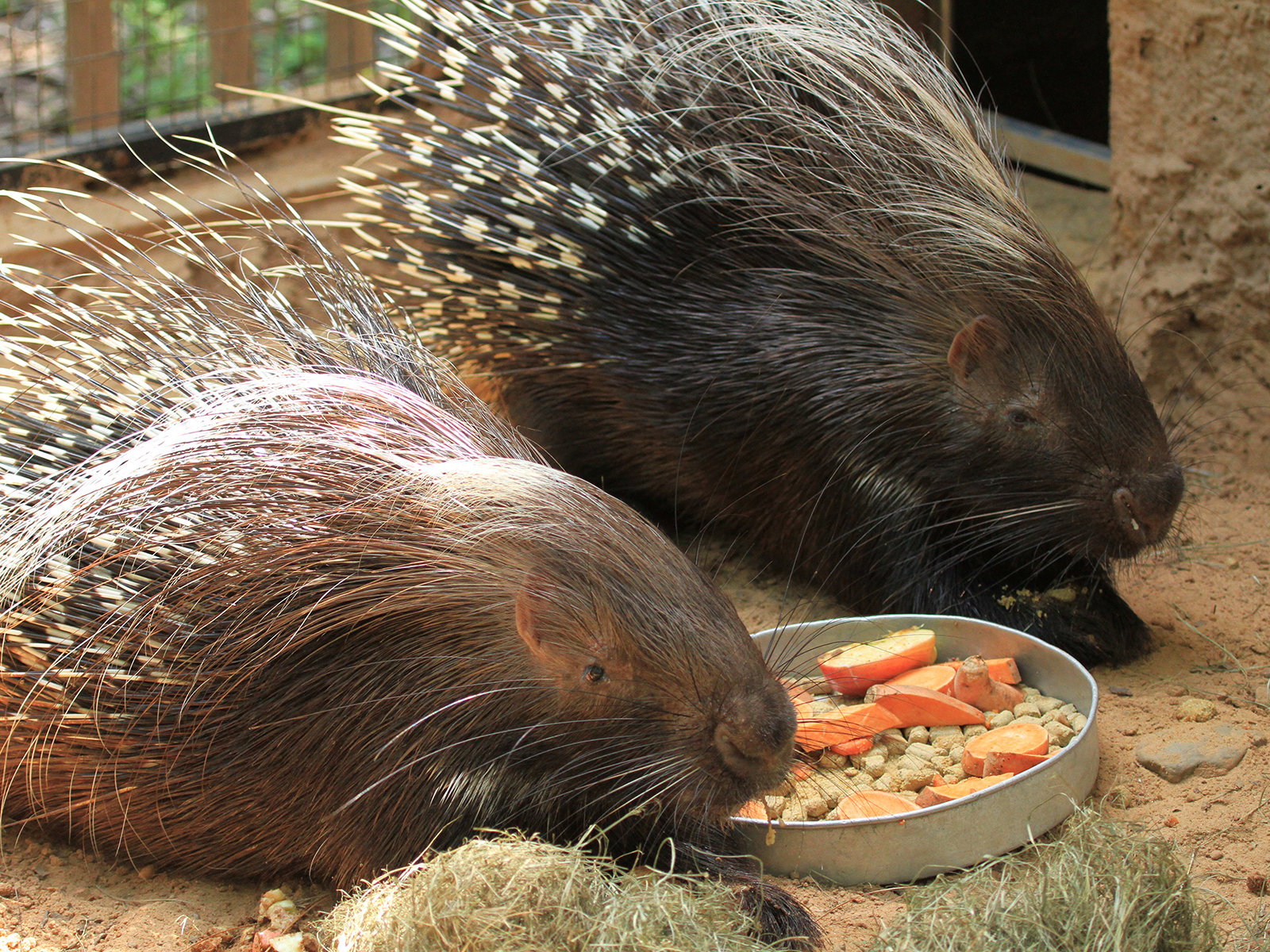Cape Porcupine
Hystrix africaeaustralis
Class
Mammalia
Order
Rodentia
Family
Hystricidae
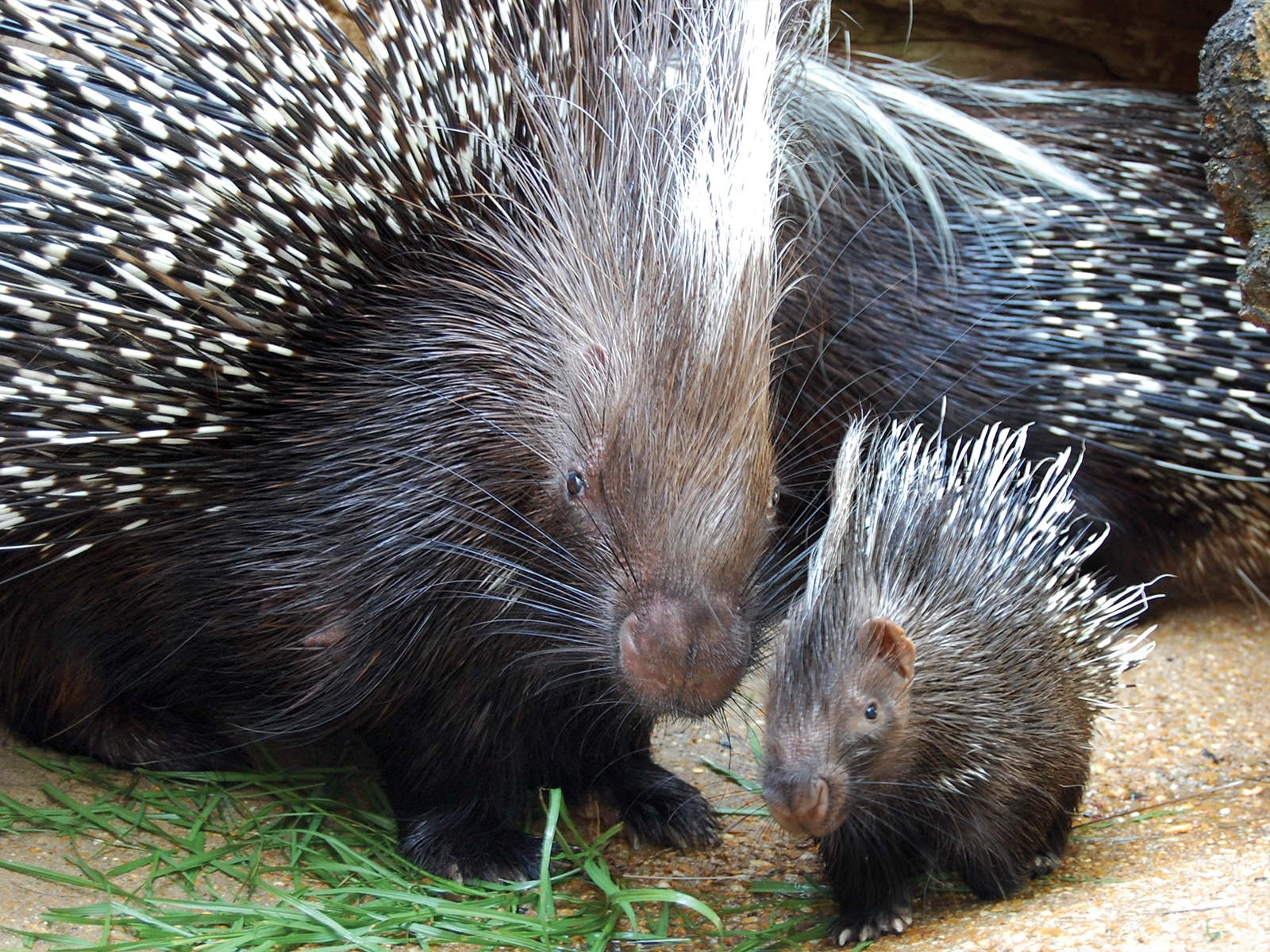
Mammalia
Rodentia
Hystricidae
Southern and central Africa, north to southern Kenya, Uganda, and Congo
Length: 25 - 32 in
Tail length: 4.3 - 7.9 in
Weight: 22 - 53 lbs
Wide range of habitats from sea level to 6,600 ft
Porcupettes: 1 - 3 (usually 1)
Gestation: 94 days
Fruits, roots, tubers, bulbs, and bark
Least Concern
Cape porcupines are a terrestrial species of porcupine, otherwise known as “Old World” porcupines.
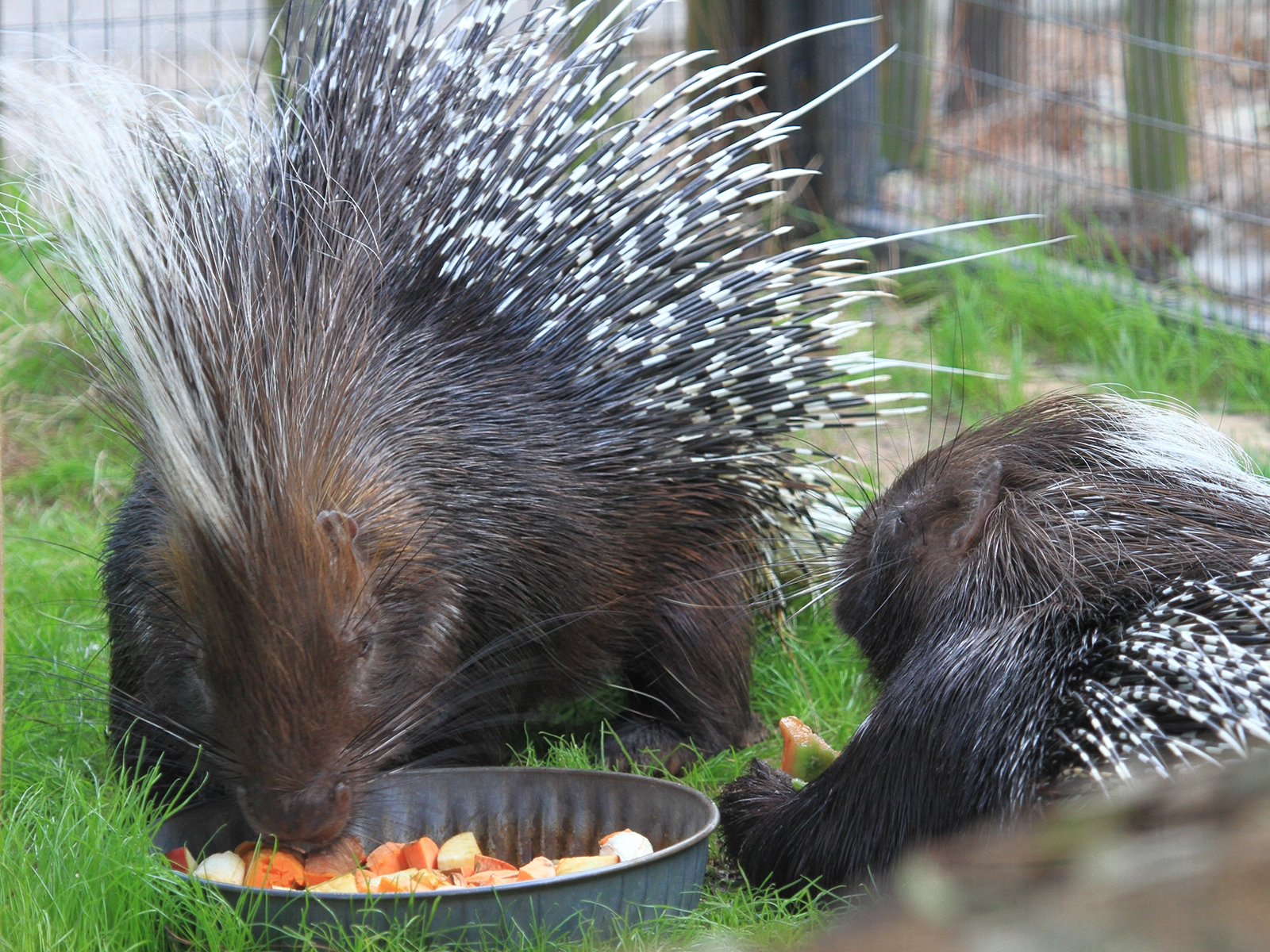
These are nocturnal animals, so they mostly sleep inside their burrows during the day and forage for food at night. They will dig their own burrows or take over abandoned aardvark burrows. A family group will develop an extensive inter-connected burrow system.
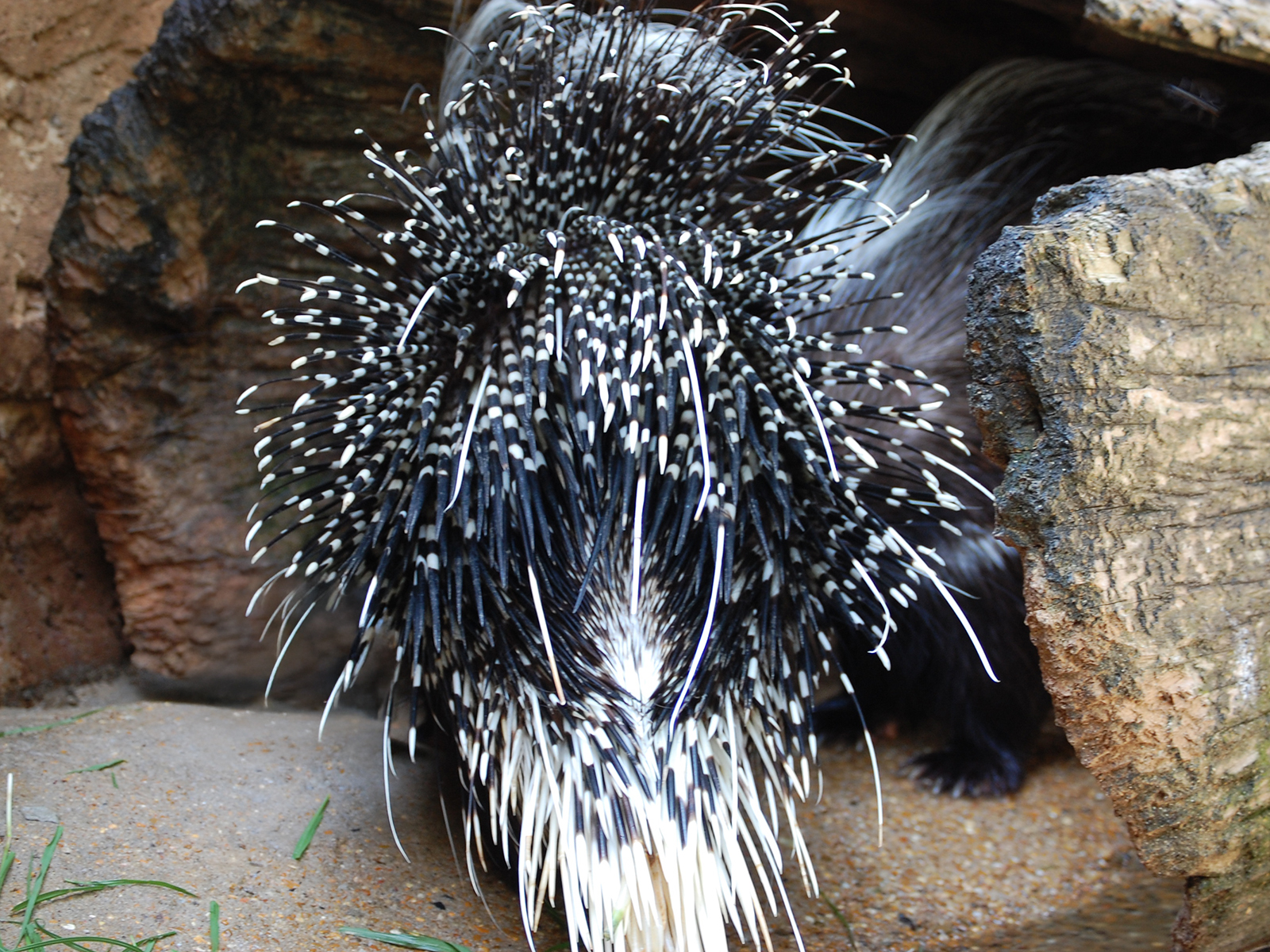
Cape porcupines have long, white quills running the length of their backs that, when raised, make the animals appear at least twice as large as they actually are. When disturbed, they stamp their feet and charge the enemy, back end first, attempting to stab with the thicker, shorter quills. Such attacks have been known to kill lions, leopard, hyenas, and humans.
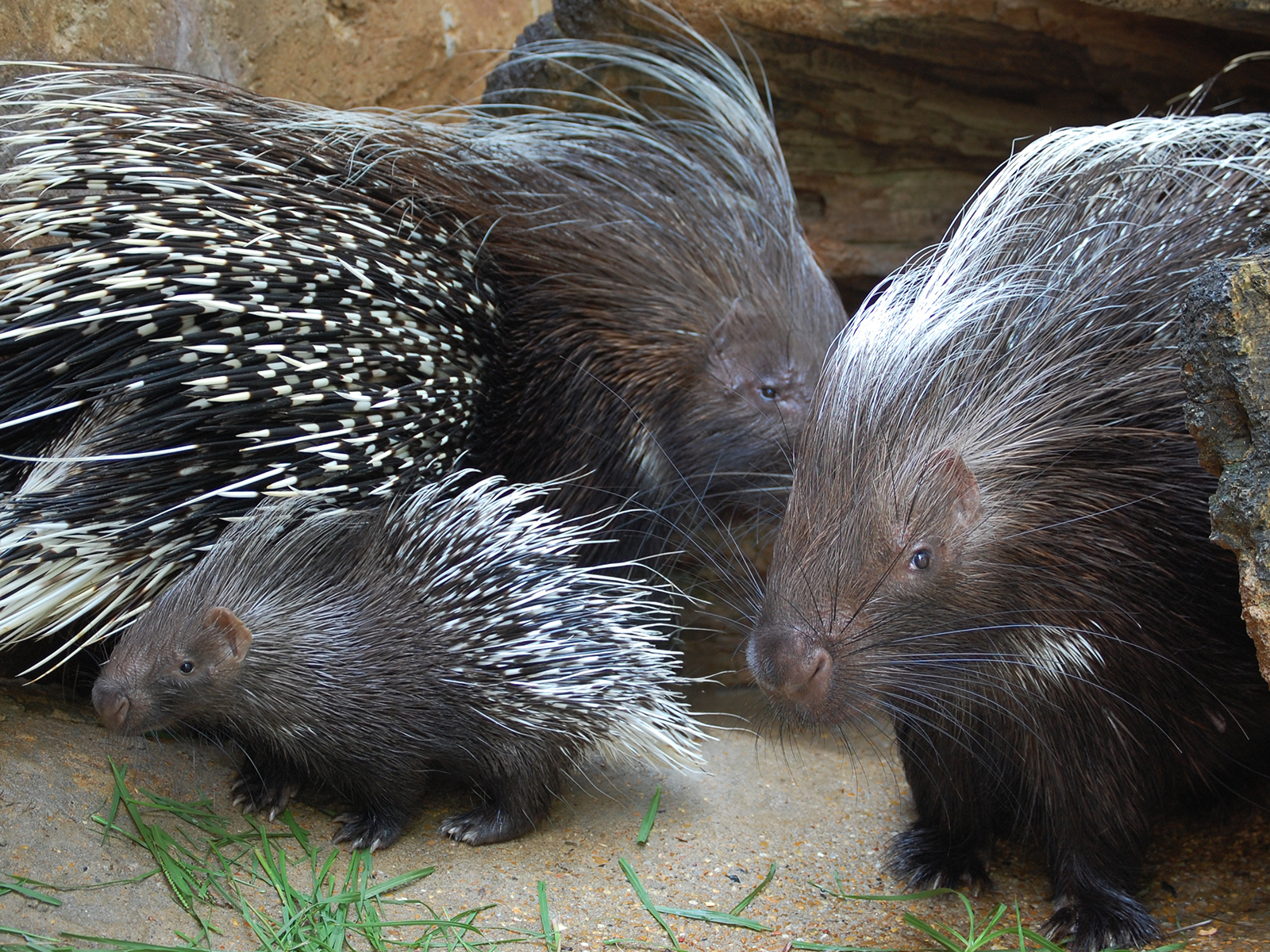
At birth, the baby porcupines, called porcupettes, are covered in soft, sensitive bristles rather than hard quills. Young porcupines begin eating solid food around one month old but continue to nurse for up to four months. They stay with their parents in small family groups for several more months before venturing out on their own to find mates.

While Cape porcupines are common across their habitat, overhunting has led to their disappearance in some areas. Farmers often see them as pests because of their destructive feeding habits, particularly in fields of root vegetables, potatoes, and corn.
Spike: Born May 6, 2002
Crunch: Born August 13, 2016
